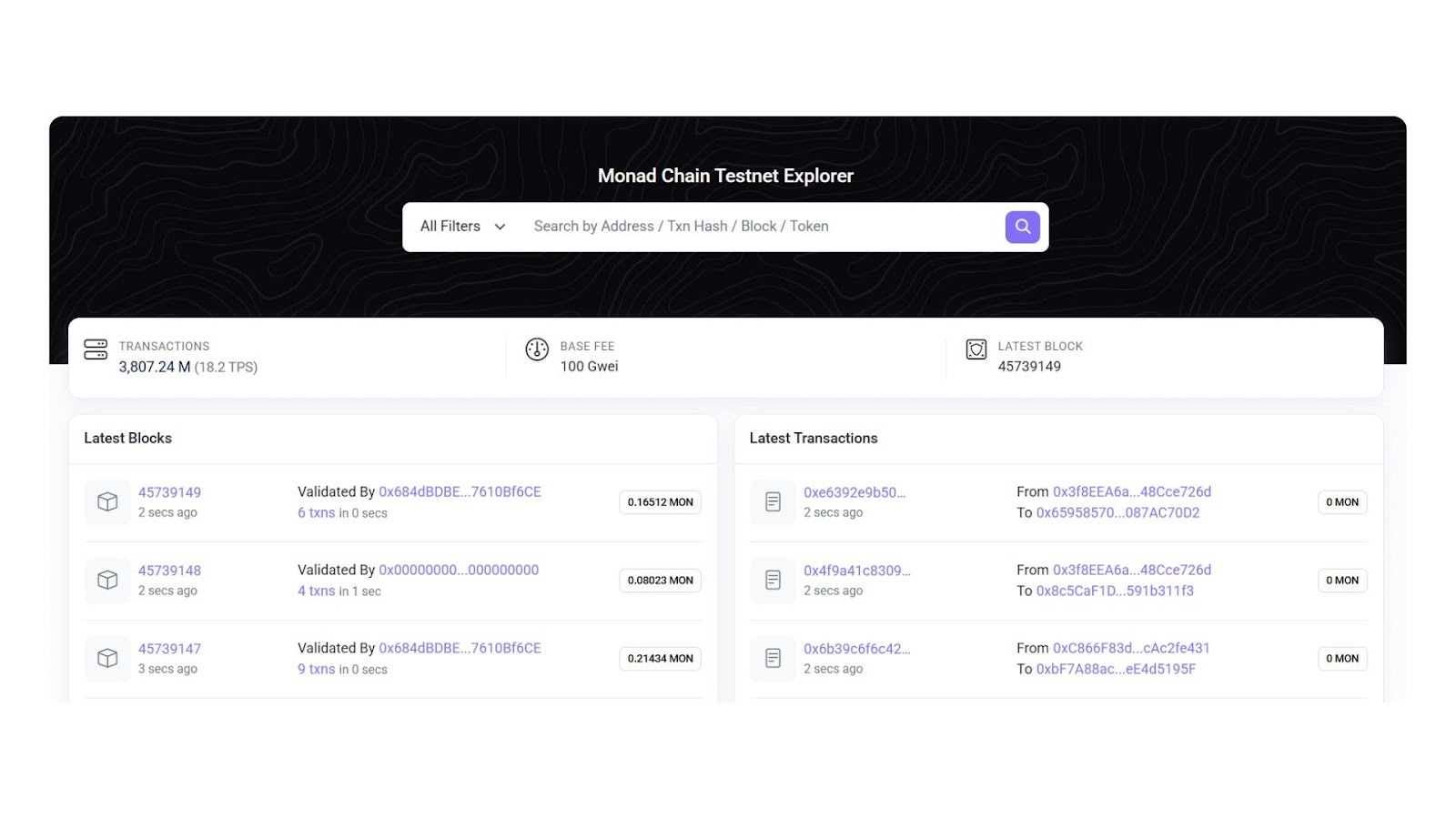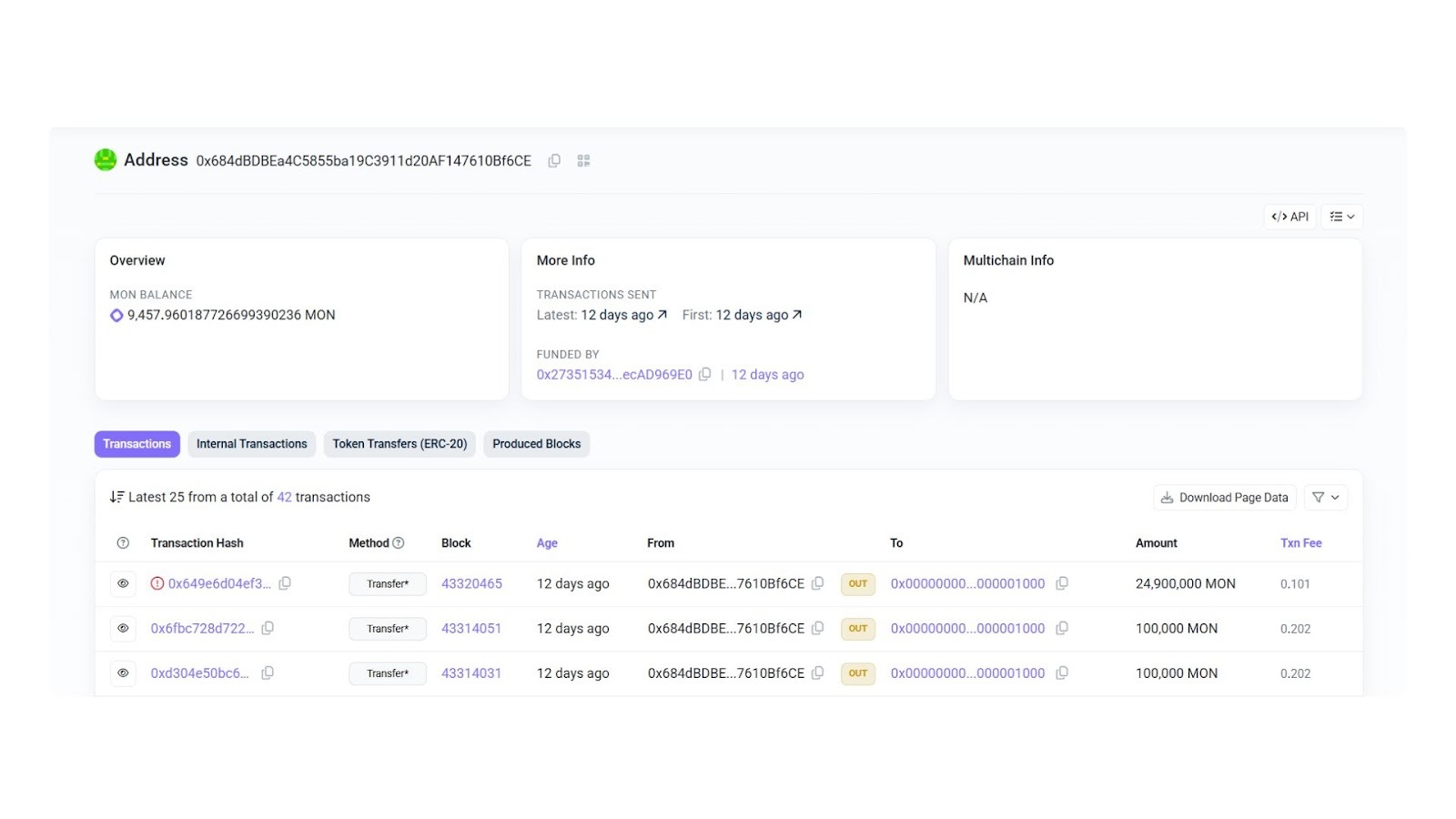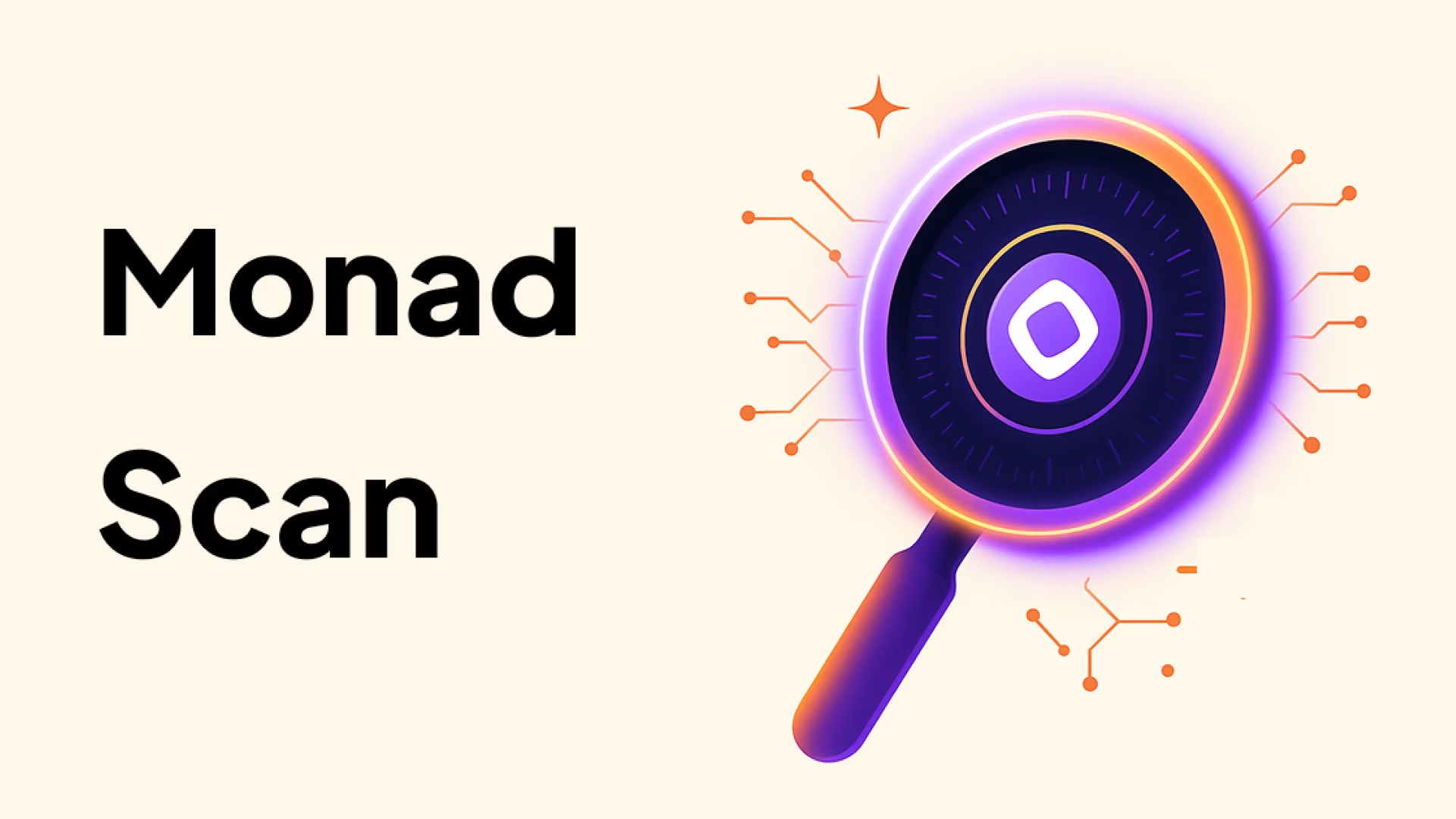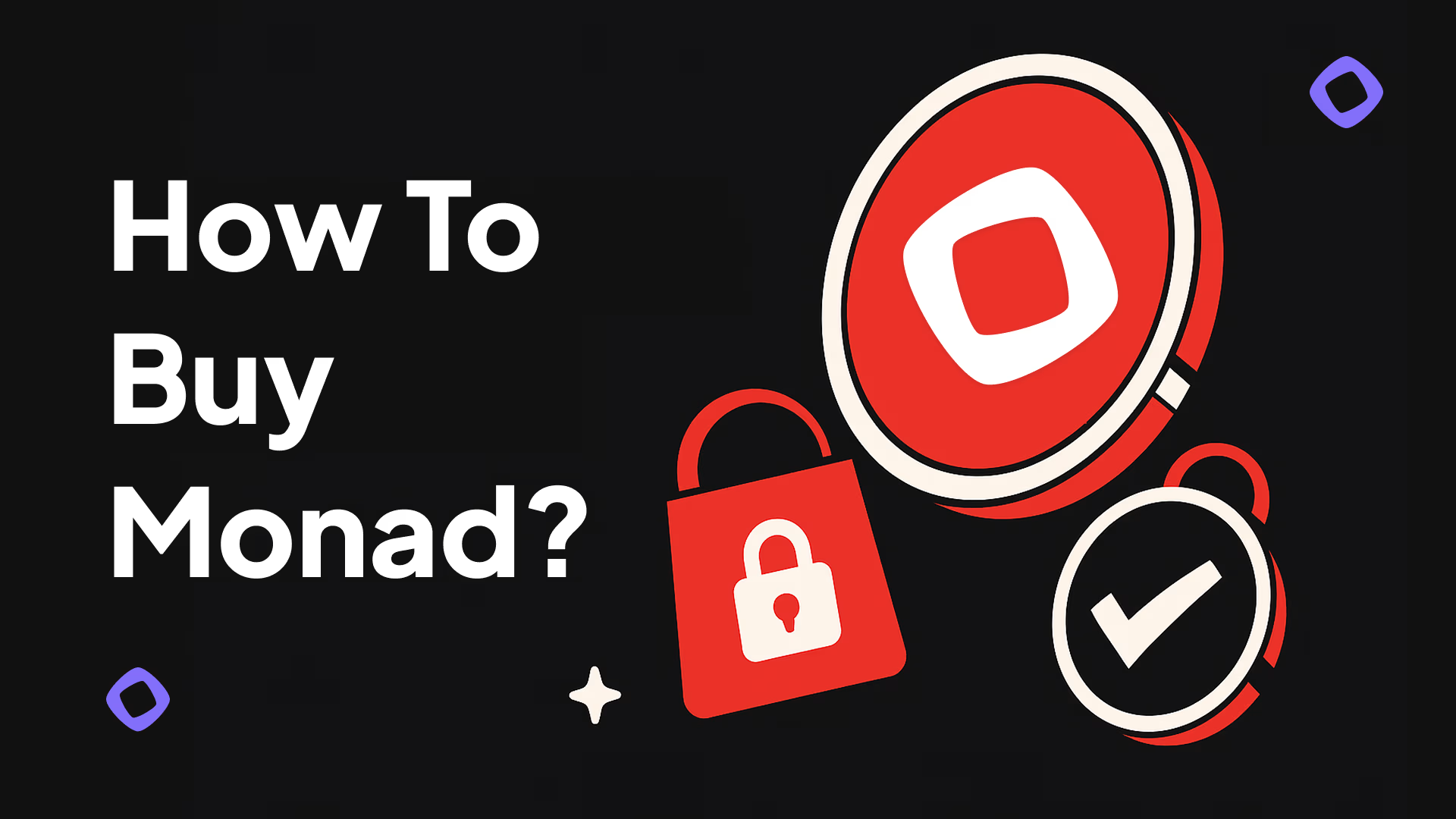Monad Scan: How to Verify Transactions and Monitor Network Health
Monad Scan is a blockchain analytics and explorer tool for the Monad Testnet. It allows you to confirm whether transactions have been successfully processed and monitor the real-time health of the Monad network.
If you want to track network stability, validator activity, or simply verify a transaction, Monad Scan provides a complete, data-driven view of how Monad performs.
What Is Monad Scan
Monad Scan is a blockchain analytics platform designed to visualize the performance and stability of the Monad network. It aggregates live on-chain data, showing how transactions are processed, how validators perform, and how efficiently the network handles activity.
You can use Monad Scan to:
- Verify whether a transaction succeeded or failed
- Track real-time performance metrics such as TPS and block time
- Review validator uptime and voting power
- Analyze gas usage and finalized blocks
Unlike traditional explorers that focus on transaction details alone, Monad Scan provides network-level insights, making it an essential tool for monitoring how Monad performs as a high-speed Layer-1 blockchain.

Why Use Monad Scan
Monad Scan helps every participant in the Monad ecosystem gain clarity and confidence in network operations.
For users: Check that your transactions are confirmed on-chain and see when they were finalized.
For developers: Inspect execution data, gas usage, and block inclusion to evaluate contract efficiency and performance.
For validators and analysts: Monitor uptime, block production, and stake distribution to assess the network’s health and decentralization.
With live updates and transparent data, Monad Scan ensures anyone can independently verify Monad’s performance without running their own node.
How to Verify a Transaction on Monad Scan
Monad Scan makes it easy to confirm whether a transaction on Monad was completed successfully.
Steps to Verify a Transaction
1. Copy your transaction hash from your Monad wallet or the dApp you used.
2. Go to testnet.monadscan.com.
3. Paste the transaction hash into the search bar and press Enter.

4. The transaction details page will display:
- Status: whether it succeeded or failed
- Sender / Receiver: wallet addresses involved
- Block number and timestamp: when and where it was confirmed
- Gas used and transaction fee: total cost of execution
- Event logs: if the transaction interacted with a smart contract
A “Success” label confirms the transaction was finalized on-chain. If the transaction failed, Monad Scan shows the reason so you can debug or recheck contract logic.

Why It Matters
Verifying transactions ensures:
- Your transfers or contract interactions executed correctly
- Developers can troubleshoot failed operations
- Validators can confirm block inclusion
- All actions remain visible and verifiable on-chain
Monad Scan turns transaction validation into a simple, transparent process, essential for building trust and accuracy in a decentralized network.
How to Monitor Network Health
Monad Scan also functions as a real-time performance dashboard, giving a complete overview of the network’s operational state. It visualizes key metrics that reflect speed, reliability, and validator participation.
Key Metrics to Watch
Transactions per second (TPS): Shows how many transactions the network processes each second. Higher TPS indicates greater scalability and throughput.
Average block time: Measures the average interval between new blocks. Faster block times mean lower latency and quicker confirmations.
Gas usage: Represents total computational resources used in recent blocks. Increased gas usage typically means higher on-chain activity from users and dApps.
Finalized blocks: Counts how many blocks have been confirmed by the network. A steady increase indicates consistent performance and stability.
Active validators: Displays the number of validators currently securing the network. A larger, diverse set signals healthy decentralization and reliability.
How to Use These Metrics
- Open Monad Scan and go to the Network Overview section.
- Watch the TPS and block time indicators update in real time.
- Open the Validators tab to see uptime, voting power, and stake details.
- Explore the Blocks tab to review recent block production, gas usage, and transaction counts.
By observing these metrics together, you can gauge whether the network is stable, responsive, and performing as expected. Spikes, slowdowns, or unusual validator activity can help identify when upgrades or configuration changes affect network behavior.
Advanced Use Cases
For developers: Monitor transaction latency and gas efficiency to test smart contract performance under real conditions.
For validators: Track uptime, block proposals, and consensus participation to ensure node reliability.
For analysts and ecosystem teams: Use Monad Scan data to benchmark performance improvements and evaluate network scalability over time.
Conclusion
Monad Scan provides the transparency needed to understand how the Monad blockchain performs in real time. It helps users verify individual transactions while giving developers and validators insight into overall network efficiency and stability.
Whether you are sending tokens, testing smart contracts, or monitoring validator performance, Monad Scan ensures that the Monad network remains transparent, measurable, and reliable.
To explore the Monad blockchain, set up a wallet that supports the ecosystem. Backpack Monad Wallet lets you securely store, send, and interact with MON and other assets on Monad.




.avif)